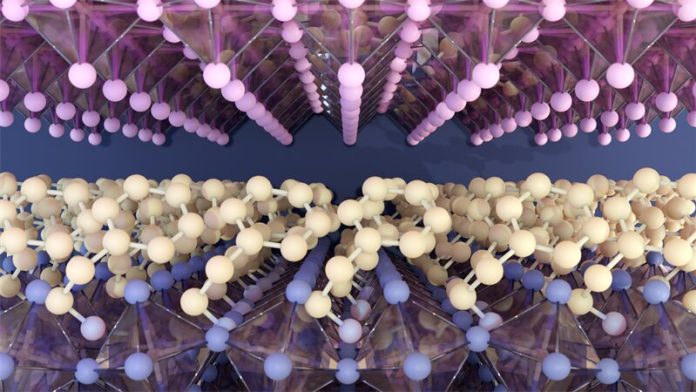
Researchers at Chalmers University of Technology in Sweden have made a significant breakthrough in the quest for better materials for solar cells.
Using advanced computer simulations and machine learning, the team has gained new insights into halide perovskites, a group of materials that could replace traditional silicon in solar cells.
These materials are known for being efficient at absorbing and emitting light, making them promising for use in solar cells and other applications like LED lighting.
However, they have a major drawback: they degrade quickly.
To better understand how these materials work and how to improve their stability, the researchers focused on 2D perovskites.
These are more stable than their 3D counterparts but still require further study to unlock their full potential.
The findings were published in the journal ACS Energy Letters in an article titled “Impact of Organic Spacers and Dimensionality on Templating of Halide Perovskites.”
The researchers, led by Professor Paul Erhart, used computer simulations to map out the behavior of 2D perovskite materials under different conditions, such as exposure to heat and light.
These simulations allowed them to study how the atoms in the material move and react. This type of analysis is difficult to achieve through experiments alone, as the simulations provide a microscopic view that is not always visible in lab tests.
“We now have a clear understanding of how the atoms behave in these materials, giving us a deeper insight into their stability,” said Erhart. “The advantage of simulations is that they allow us to observe what’s happening on a very detailed level, which helps explain the results of experiments.”
Machine learning played a key role in this research. It allowed the team to study larger systems over longer time periods, providing both a broader overview and a more detailed understanding of how these materials function.
According to Associate Professor Julia Wiktor, this approach revealed that each thin layer of the material behaves differently, a discovery that would be very difficult to detect with traditional experimental methods.
“This broader and deeper understanding helps us figure out how to improve the material’s stability and efficiency,” Wiktor explained.
2D perovskites are made up of inorganic layers stacked on top of each other, separated by organic molecules. The researchers found that the choice of these organic molecules directly affects how the atoms in the material move, which in turn influences the material’s optical properties.
“This discovery allows us to better predict which combinations of organic molecules and perovskite layers will make the material more stable and efficient,” said Erhart. “Our next step is to study even more complex systems, especially the interfaces that are key to how devices using these materials function.”
These findings represent a major step forward in the development of more durable, high-performance solar cells and other optoelectronic devices. By improving the stability of 2D perovskites, researchers hope to pave the way for more sustainable and cost-effective energy solutions.



